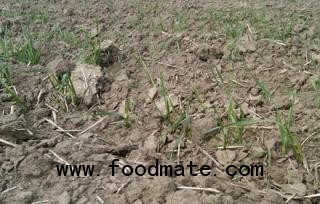
Reports indicate that is the worst rating ever given to a U.S. wheat crop for this time of year. Crops in Nebraska and South Dakota are the worst, at 49 percent and 52 percent poor/very poor respectively. One has to expect yet another decline in national winter wheat crop ratings for next week's report, given the weather conditions that will be seen this week in the Plains.
All of the rain from a big storm system for November 11-12 is going to by-pass that area (that is especially the case in the west, where rains are needed the most), and very warm temperatures for late this week (with windy conditions at that time as well) will really draw a lot of moisture out of the soil. That November 11-12 storm does look to be quite strong to the east of the Plains, likely producing a lot of rain in the Mississippi River Valley (good news for boosting water levels on the Mississippi River and its tributaries) but probably a round of severe weather with that storm as well.
That same storm is going to produce a true blizzard in northwestern parts of North Dakota and through a lot of Montana, with up to a foot of snow being whipped around by very strong winds for Friday and Saturday. Ahead of that storm will be some very warm temperatures at the end of this week, but temperatures will be falling sharply early next week for all areas to the west of the Appalachian Mountains.
Best precipitation for the 11-15 day time frame will be east of the areas of the western Corn Belt and Plains that need it so badly right now. One has to admit that we are now into the time of year when one just really can't expect drought relief for the Plains and western Corn Belt, simply because we are to the time of year when those areas normally see so very little moisture. We are basically guaranteed that our current drought will still be on the minds of traders next spring as the winter wheat crop comes out of dormancy and we start thinking about the beginning of spring planting operations.





